In this tutorial, the Simulation damage of reinforced concrete slab subjected to underwater explosion by using CEL method in Abaqus has been studied. The Eulerian part contains TNT, air, and water is modeled as a three-dimensional Eulerian part. The concrete slab is modeled as a three-dimensional solid part. The steel reinforcement is modeled as a three-dimensional wire part. You can see a figure of the assembled parts below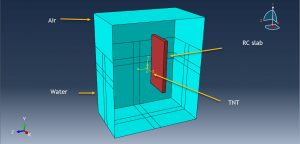
The prediction of damage and failure of structures subjected to underwater explosions (UNDEX) is of particular importance to marine applications. The dynamic response of structures in the vicinity of UNDEX is complicated, involving detonations of explosives, propagation of shock waves, pulsations of gas bubbles, fluid-structure interaction, nonlinear vibration of structures, and so on. The explosives charges can be modeled by the Jones-Wilkins-Lee equation of state which convert chemical energy released from the explosion to the mechanical pressure. For the water the Us-Up equation of state is selected. To define air, equation of the state as ideal gas type is considered. To model steel reinforcement under severe load like explosion shock, elastic-plastic model with ductile damage criterion is used. The Abaqus has some material models to define concrete behavior under blast load and during the explosion, huge damage will created on the slab surfaces, so the proper material model must be selected and it can define as a code and modifying input file. The dynamic explicit step and general contact algorithm are appropriate for this type of analysis. The embedded constraint is assigned to the reinforcement as a embedded region inside the concrete host. The fixed boundary condition is assigned to the bottom surface and side surfaces of the slab. To model Eulerian material, the volume fraction method and uniform material can be implied. In this example the second it selected. The mesh should be fine to obtain proper results
After the simulation all results such as stress, failure, damage, blast wave propagation, TNT expansion, and … are available. You can see some figures for the results below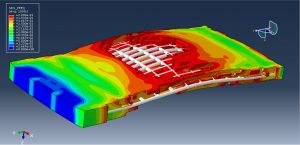
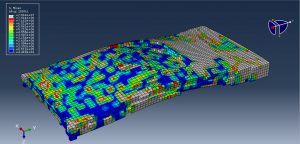
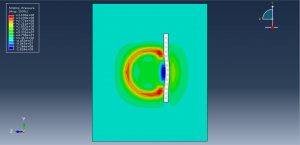
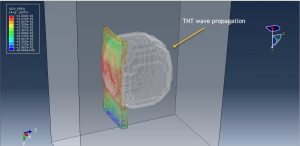
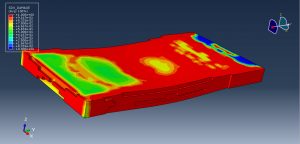
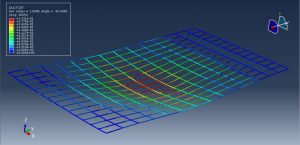
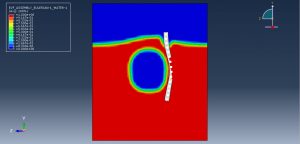
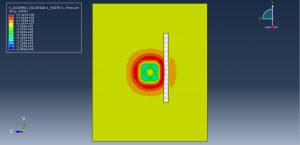
You can provide CAE ,INP,and English video files of this simulation here. The cost of these files is Twenty-Nine Euros. you can click on the bellow bottom to beginning process
You can purchase the tutorial through a PayPal account, a Visa, or a Master card, just before payment,send me an email to this address: karampourp@gmail.com
 Abaqus tutorials Abaqus tutorials
Abaqus tutorials Abaqus tutorials
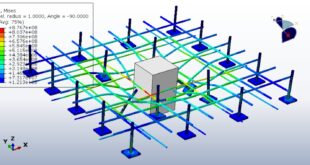
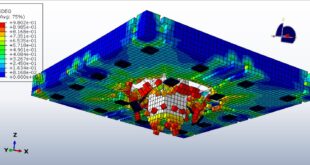
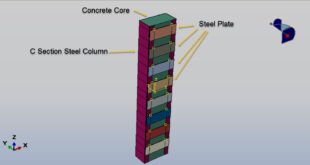
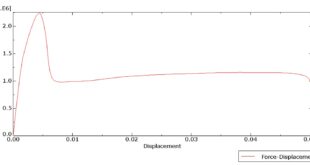

Hello
I would like to ask about the blasting using CONWEP air blast charge
I have a shell element and my material is steel I entered material propertiesd for steel with JC plasticity model and JC Damage model .
My questions are :
۱ how can i know if my result are accurate ?
۲ how can I do element deletion where failure element will be removed Note that i tried to make this option in meshing setting and i tried to enter this in field output but Abaqus is showing warning that the S4 type of element not supporting this output.
However I tried to use 3D instead of shell i cant know if the result will be same and if not which one is correct
the thickness of my plate geomatry is 12mm.
Check your email